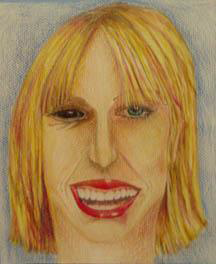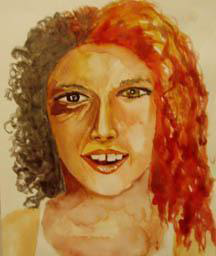Goal (Terminal Objective):
Students will learn correct facial proportions, accurate skin tone color blending, and apply creative problem solving to complete a portrait drawing.
Objective:
After learning the proper layout of a proportionate human face, students will be given the challenge of putting randomly selected facial feature reference pictures into a color portrait drawing exhibiting correct human proportion.
National Standards:
Visual Arts Grades 9-12 Content Standard 1: Understanding and applying media techniques, and processes
Visual Arts Grades 9-12 Content Standard 4: Understanding the visual arts in relation to history and cultures
Visual Arts Grades 9-12 Content Standard 5: Reflecting upon and assessing the characteristics and merits of their work and the work of others
Purpose:
Students will use aesthetic scanning to view and discuss examples of portrait drawings and paintings from different historical periods. Students will learn and apply the correct proportions when drawing a portrait. Students will visually demonstrate their skill of blending accurate skin tones and their ability to show form in a 2-dimensional drawing. Students will apply creative problem solving through the unique personality expressed in their final portrait drawing.
New Vocabulary:
portrait, proportion
Materials:
White drawing paper, Magazines, and the following Sargent Art supplies:
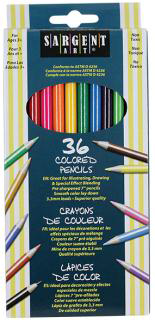
#22-7236 Colored Pencils
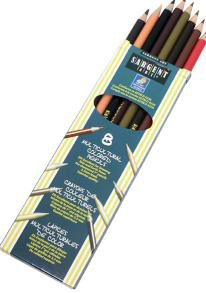
#22-7208 Multicultural Colored Pencils

#22-1403 8 g. Washable Glue Stick

#22-8426 16 ct. Art-Time Premium Oval Watercolor Set
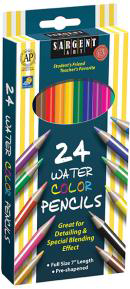
#22-7205 24 ct. Watercolor Pencils

#22-7244 144 ct. Graphite Pencils
Time:
approximately 5 class periods
Introduction and Motivation (Set):
Begin by showing images of portraits from different periods throughout Art History. Find some that are not in proportion and ask the students what seems wrong or right about the faces. If mirrors are available, have students study their own faces while teaching them the correct human proportions. Draw a facial proportion diagram on the board and have students draw the same along with you. This will be a good reference to them later.
Instruction:
- From magazines, have students find two eyes, a nose, and a mouth to use as reference. They must be from four different faces. Students glue the features onto a note card using a Sargent Art gluestick.
- By following the rules of facial proportions, students begin with a pencil drawing of their portrait. The challenge for them is to draw the eyes, nose, and mouth from their reference card, but make size adjustments and placement judgments to fit the features into a proportionate portrait drawing.
- Using their choice of colored pencils or watercolors, students complete the portrait with accurate color mixing of skin tones. Again, students refer to the images on their reference card. Also, students need to be aware of how to blend colors in order to achieve the illusion of the 3- dimensional form of aface.
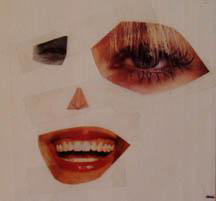
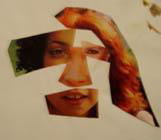
Reference cards
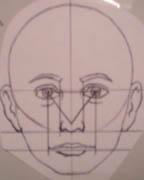
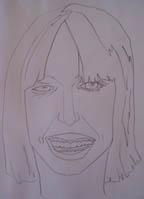
Students complete the portrait by freehand drawing the shape of the face and a creative hairstyle.
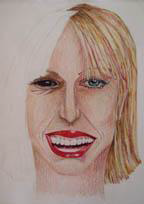
colored pencil portraitin progress
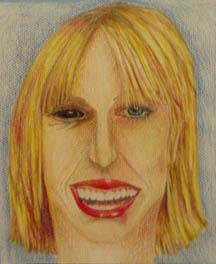
completed colored pencil portrait
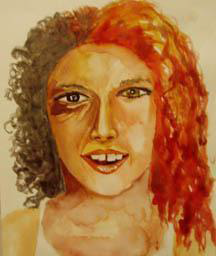
complete watercolor portrait
Activities:
(1) Guided Practice:
a. Students aesthetically scan examples of portrait drawings and paintings from different periods throughout ArtHistory.
b. Students study their own face and learn the proper placement of features when drawing a proportionate human face.
c. Students use random reference images from magazines to complete a portrait demonstrating their knowledge of human proportions.
d. Students demonstrate their technical ability to blend colors to achieve an accurate visual of a face with form.
e. Students demonstrate individual creativity by completing the shape of the face andan original hairstyle.
(2) Independent Practice and Check forUnderstanding:
a. Teacher circulates and helps students with proportion questions along theway.
b. Teacher offers individual help with color blending and creating the illusion of form while students work on completing theirportrait.
(3) Closure:
a. These drawings look really interesting when displayed all together on a bulletinboard. It catches viewers attention because they end up being quite freaky andfun!
b. Teacher leads students in a discussion of proportion problems and successes seenin finished portraitdrawings.
Evaluation:
Level One — The finished portrait very successfully demonstrates the student s understanding of facial proportions. The student has shown strong technical skills in color blending to create the illusion of form. The student has shown a high level of creativity in completing the portrait with individual personality. Craftsmanship is outstanding.
Level Two — The finished portrait shows good understanding of facial proportions. The student has shown good technical skills in color blending and creating the illusion of form. The portrait is completed creatively and craftsmanship is good.
Level Three — The finished portrait shows limited understanding of facial proportions. The student has limited technical success in color blending and creating the illusion of form.
Creativity and craftsmanship is minimal.
Level Four — The finished portrait shows no understanding of facial proportions.Thetechnical skill of color blending and creating the illusion of form is poor. Creativity, effort, and craftsmanship are poor.
Extension:
This project could also be done with the focus placed on black and white pencil or charcoal blending.
Resources:
http://aliceneel.com/
http://www.abcgallery.com/M/modigliani/modigliani.html
http://www.jacquesmoitoret.com/html/portraits.html
http://www.artquotes.net/masters/leonardo-da-vinci/mona-lisa.html
Art Consultant



